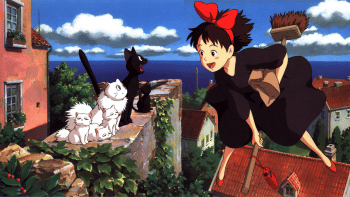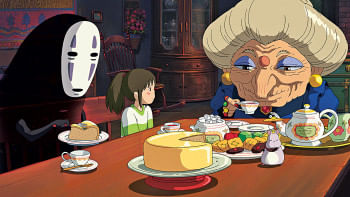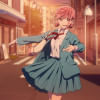We love Studio Ghibli’s female characters, here’s why

Works of art and literature based on the patriarchal Japanese society often portray women as family-oriented and submissive, in contrast to the men who are shown as the strong breadwinners and heads of households. A lot of Japanese media is centred around the infantilisation of women with features like big eyes and small round faces, a stereotype often perpetuated by anime and manga industries as well as the Lolita fashion subculture.
Amid all the media which hyper-sexualises women and puts them into boxes, Studio Ghibli movies feel like a breath of fresh air, crafting a safe space for feminist tales within their fantasy worldscapes by allowing characters to just be themselves.
Hayao Miyazaki, co-founder, creative director, and producer behind most of the studio's award-winning movies, has stated that he gets inspired by the female staff at his office to create the beloved cast of diverse and inclusive female characters.
Because he crafts his characters based on the people in his life, they often come off as realistic and human. While I cannot attest to his attitude towards women in his personal life, Miyazaki seems to have a moderate level of respect for the women he crafts on screens. This is evident in the way he represents various female perspectives without generalising them, passing the Bechdel test. Studio Ghibli is known for its well-rounded and admirable female characters which people of all ages can relate to and view as role models.

Miyazaki previously stated that many of his movies have strong female leads; brave and self-sufficient girls who don't think twice about fighting for what they believe in with all their heart. They'll need a friend or a supporter, but never a saviour. Instead of focusing on the romance between the characters, Miyazaki excels in exploring various coming-of-age self-exploratory stories of youth.
Western heroines like Disney princesses are often the damsels in distress needing to be saved by the prince, but Ghibli's female protagonists tend to be the masters of their own destinies. Their romantic interests are there more to support them than save them from the big bad wolf. Characters like Seiji Amasawa in Whisper of the Heart and Sho in The Secret World of Arrietty take on more supportive, gentle roles, providing their female counterparts space to grow and mutually work towards finding their own paths in life.
Throughout the years of watching and rewatching the Ghibli movies, one character who has always stuck with me is Lady Eboshi from Princess Mononoke. She is not only the fearless leader of Irontown but also provides shelter and work for those in need, whom society scorns as outcasts. She is unwavering in her convictions and people follow her willingly and happily, never questioning her decisions. Even though she takes on more of a morally grey role in the movie, her compassion and dedication to keeping her community safe felt admirable and struck a chord in me.
Another Ghibli protagonist who proves that women can be both powerful and feminine at the same time, without one character trait obstructing the other, is Nausicaa from Nausicaa of the Valley of the Wind. Nausicaa is extremely strong-headed and fearless as a leader, but also exceedingly kind, vulnerable, and generous. Although Nausicaa, being a princess living in a post-apocalyptic world filled with deadly toxins, has every right to be bitter and cold, she never lets her circumstances bring her down. Rather, she finds a way to spread kindness and peace everywhere she goes, showing that one doesn't need to be ruthless to be taken seriously.

Hayao Miyazaki deconstructs the very idea of traditional femininity with his movies. From women with disabilities holding positions of power and leading armies to saving their friends and communities, and running businesses, gender isn't a barrier for these characters. Their unique voices and personalities speak for themselves, instead of their physical appearances narrating their stories.
The reason why Studio Ghibli movies resound so strongly with audiences, especially women, is because of their genuine characterisation and messages. These movies reinforce the idea that people do not simply fit into superficial boxes but are all unique and our voices matter, no matter who or what we may identify as. At the end of the day, maybe the real magic of Ghibli films is that they make us believe in a world where women are treated as equals and are allowed to grow and flourish without prejudice or judgement.
Sara Kabir is a dreamer, a Literature graduate, and a writer. She wishes she could live inside a Studio Ghibli movie. Follow her @scarletfangirl on Instagram for more.

 For all latest news, follow The Daily Star's Google News channel.
For all latest news, follow The Daily Star's Google News channel. 











Comments